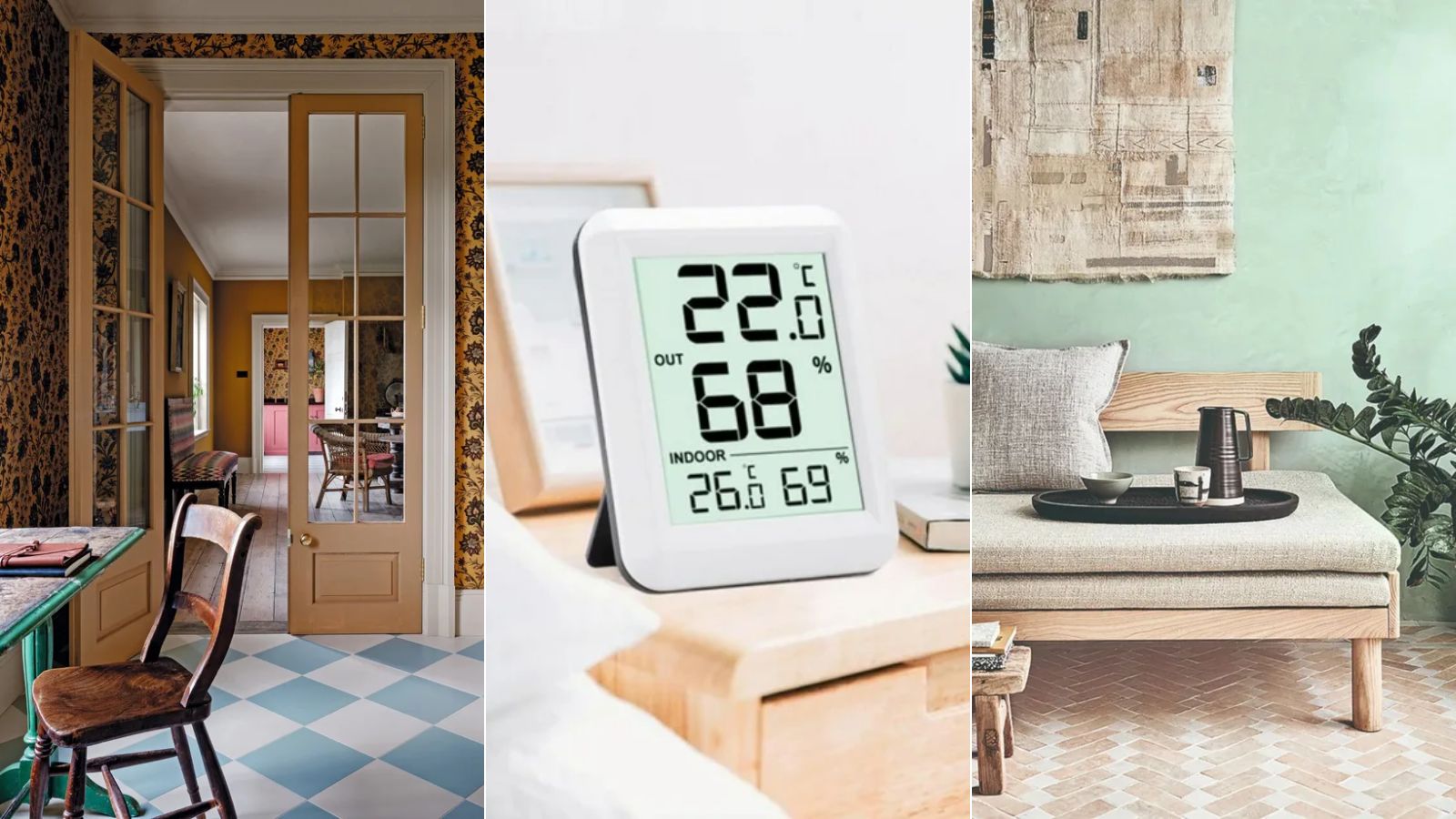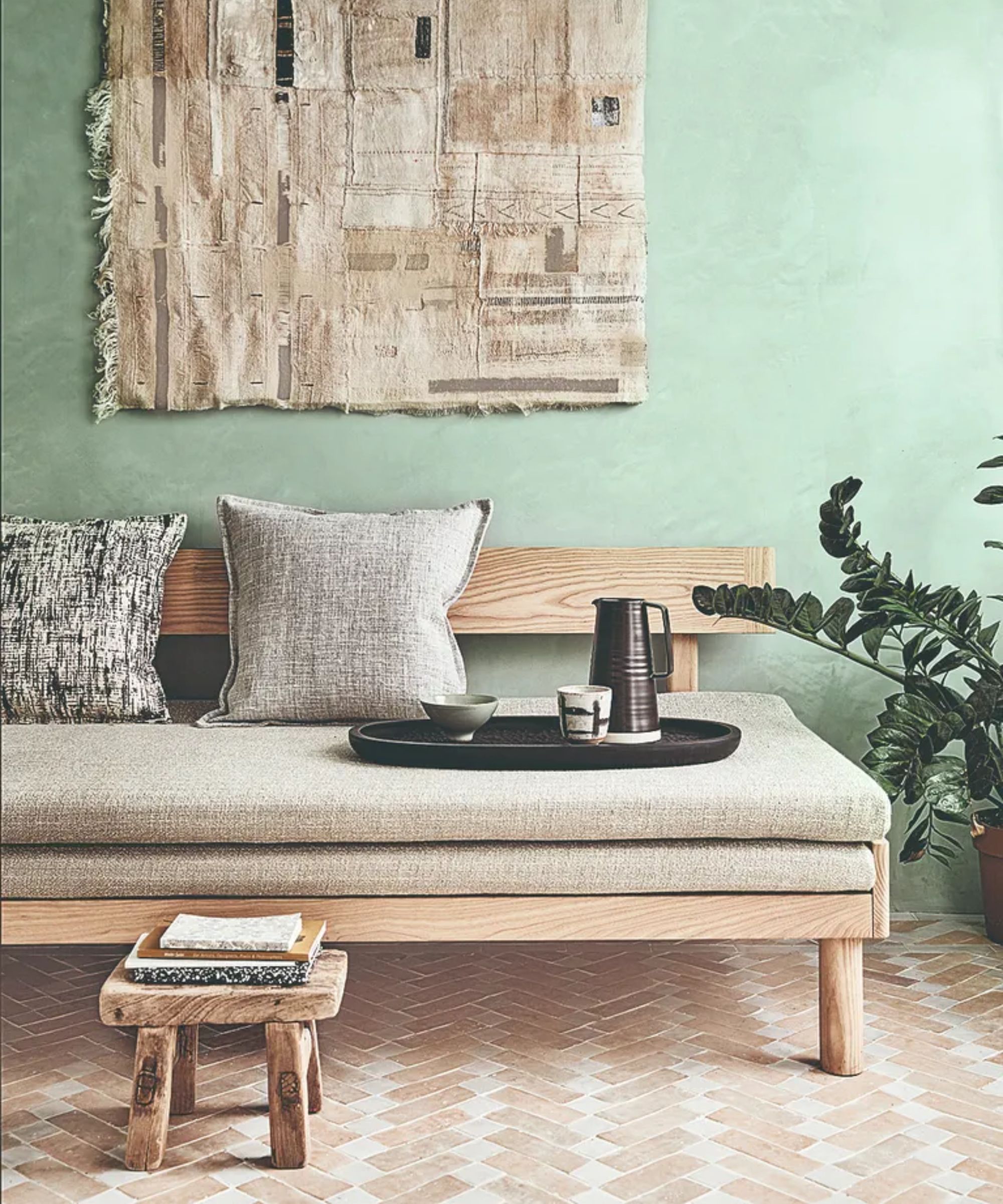Experts reveal the best humidity levels for your home year-round
Air quality experts explain the ideal humidity range for a healthy, comfortable home and how to monitor and adjust this year-round


Although it may not seem like the most essential part of your home's maintenance, humidity levels are an important thing to get right.
Keeping your home within the recommended humidity range year-round is not just about maintaining comfort – it also plays a significant role in preserving the structure of your home, ensuring a healthier living environment and even helping to cut energy bills.
Wondering what humidity your house should be in winter or summer? Finding and maintaining the optimal indoor humidity levels year-round, while adjusting to fluctuations in outdoor humidity can significantly benefit your living environment.
Best humidity levels for a home year-round
'The ideal indoor humidity level varies slightly depending on personal preference and specific conditions, but generally, a range between 30% and 50% is recommended for most homes throughout the year,' says Josh Mitchell, HVAC technician and the owner of Air Conditioner Lab.
Maintaining this range will ensure your home feels the most comfortable. This range also creates a healthier environment by reducing dust mites, musty odors, and common types of mold.
However, the ideal level can vary within this range. As seasons change, so will your home’s humidity, meaning the ideal range will shift according to the outdoor humidity levels. Learn about the signs of high humidity to help you get ahead of this problem.
Colder months

'In the colder months, humidity is generally lower, aiming for the lower end of this range (around 30% to 40%) can help stop condensation on windows and the accompanying mold or mildew growth,' explains Josh Mitchell.
'This will also provide enough moisture in the air to alleviate issues associated with dry air, such as irritated skin, throat, and nasal passages.'
If, however, you wake up with a sore and dry throat, it's worth sleeping with a humidifier running, and shock ventilating in the morning to reduce the risk of mold.
Warmer months

'During the warmer months, keeping humidity levels at the higher end of the spectrum (40% to 50%) can help make the air feel cooler and more comfortable, reducing the need to lower the thermostat and help cut your energy bills,' says Josh Michell.
'However, it's important to avoid exceeding 50% humidity to prevent creating conditions conducive to mold growth and dust mites.'
Monitoring and adjusting humidity levels

Use hygrometers: Monitoring your home's humidity level with a hygrometer can make it easier to maintain the optimal range. This device allows you to identify when your indoor humidity levels are not in the ideal range of 30%-50% and adjust your humidity control strategies as necessary.
You can place these devices in various areas of your home to get a comprehensive understanding of your home's overall humidity levels.
We recommend these two mini hygrometers, from Amazon, in different areas of your home, or this SensorPush thermometer/hygrometer for iPhone/Android, also from Amazon, for more in-depth analysis.
Also, investing in one of the best dehumidifiers allows you to monitor moisture levels easily, plus it will improve the quality of the air, preventing certain health issues.
Make seasonal adjustments: Be attentive to fluctuations in humidity levels as seasons change and adjust your approach accordingly.
Managing optimal indoor humidity involves reducing your home's humidity during warmer months with proper ventilation, air conditioners or dehumidifiers, and potentially using humidifiers during dry months. This should ensure optimal conditions year-round.
Address moisture sources: Identify and address any sources of excess moisture within the home, such as leaky pipes, poorly sealed windows, or inadequate drainage systems. Addressing these issues will help prevent moisture buildup and maintain optimal humidity levels.
FAQs

Why is maintaining the optimal humidity levels essential?
Health and comfort: Maintaining balanced humidity levels is essential for comfort and fostering a healthier living environment.
'Too high or too low humidity levels are bad for the respiratory system and can increase the amount of allergens in the air,' explains Roy Jaramillo, PR manager at Amazing Air Solutions. 'While high humidity levels are associated with mold spores, low humidity levels can increase the prevalence of dust and viruses.'
Proper humidity reduces the risk of mold, respiratory issues, dry eyes, and throat, supports comfortable breathing, and contributes to making your bedroom better for sleep.
Protecting your home: 'Consistently high humidity can cause damage to items in your home. For example, wooden furniture and floors may warp or swell, and wallpaper can discolor,' explains Roy Jaramillo. This can also lead to mold growth, condensation, and structural damage. Striking a balance helps protect your home's structural integrity and preserves your belongings.
Energy efficiency: 'It is also important to note that humidity levels can affect the efficiency of your home’s heating and cooling systems,' says Roy Jaramillo. 'Too high humidity or too low humidity requires more energy to heat or cool.
'High humidity makes the air feel warmer, causing air conditioning systems to work harder to cool the home. Conversely, low humidity can make the air feel cooler than it is, leading to increased heating demand.
'By maintaining the proper humidity levels in your home all year round, you help your HVAC system operate more efficiently. '
Maintaining higher humidity in winter ensures the air feels warmer in the winter, allowing you to set the thermostat lower without sacrificing comfort. In the summer, ensure the air is dehumidifier so it feels cooler. This will enable you to set the thermostat higher while maintaining a comfortable indoor environment.
Strive to remain mindful of indoor humidity and take the appropriate steps to control it where you can. By making small tweaks for summer and winter, you can avoid extreme highs and lows in order to maintain an ideal living space.
Sign up to the Homes & Gardens newsletter
Design expertise in your inbox – from inspiring decorating ideas and beautiful celebrity homes to practical gardening advice and shopping round-ups.

Lola Houlton is a news writer for Homes & Gardens. She has been writing content for Future PLC for the past six years, in particular Homes & Gardens, Real Homes and GardeningEtc. She writes on a broad range of subjects, including practical household advice, recipe articles, and product reviews, working closely with experts in their fields to cover everything from heating to home organization through to house plants. Lola is a graduate, who completed her degree in Psychology at the University of Sussex. She has also spent some time working at the BBC.
-
 I’m an HVAC technician, and this is when I turn my AC on each year – plus 5 checks I always do beforehand
I’m an HVAC technician, and this is when I turn my AC on each year – plus 5 checks I always do beforehandSave yourself an AC hassle by running my checks and turning it on before big heat hits
By Josh Mitchell Published
-
 This simple marble hack elevates my budget-friendly wooden kitchen countertops and prevents the dreaded water damage for way less than you’d think
This simple marble hack elevates my budget-friendly wooden kitchen countertops and prevents the dreaded water damage for way less than you’d thinkThis design trick looks expensive, solves a problem, and was the easiest decision I made during my kitchen reno
By Charlotte Olby Published